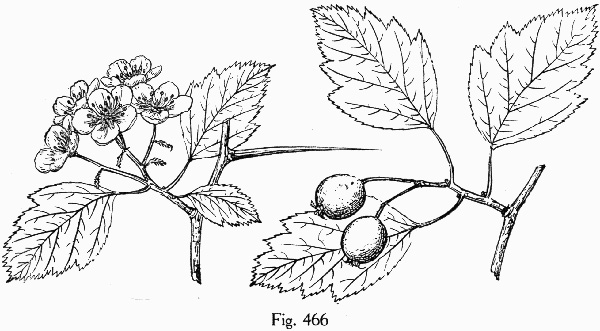Spermatophytes (seed plants): Angiosperms (flowering plants): Eudicots: Core Eudicots: Rosids: Fabids: Rosales
Series: Pulcherrimae
WEAKLEY'S FLORA OF THE SOUTHEASTERN US (10/20/20):
Crataegus venusta
FAMILY
Rosaceae
Go to FSUS key
Dig deeper at SERNEC, a consortium of southeastern herbaria.
INCLUDED WITHIN
PLANTS NATIONAL DATABASE:
Crataegus sargentii
FAMILY
Rosaceae
SYNONYMOUS WITH Flora of North America north of Mexico, vol. 9 (2014)
Crataegus venusta
(?) SYNONYMOUS WITH Haws: A Guide to Hawthorns of the Southeastern US (Lance, 2014)
Crataegus venusta var. venusta
SYNONYMOUS WITH Beadle in Flora of the Southeastern US (Small, 1913)
Crataegus venusta
COMMON NAME:
Red Mountain Hawthorn
To see larger pictures, click or hover over the thumbnails.
WEAKLEY'S FLORA OF THE SOUTHEASTERN US (10/20/20):
Crataegus venusta
FAMILY
Rosaceae
INCLUDED WITHIN
PLANTS NATIONAL DATABASE:
Crataegus sargentii
FAMILY
Rosaceae
SYNONYMOUS WITH
Flora of North America north of Mexico, vol. 9
Crataegus venusta
(?) SYNONYMOUS WITH
Haws: A Guide to Hawthorns of the Southeastern US (Lance, 2014)
Crataegus venusta var. venusta
SYNONYMOUS WITH
Beadle in Flora of the Southeastern US (Small, 1913)
Crataegus venusta
If a search such as "Carex leptalea var. leptalea" doesn't deliver the results you want, try "Carex leptalea".
Or, to minimize chances of a misspelling, try just "Carex le".
Less is more: If "pencil flower" doesn't deliver the results you want, try "pencil".


